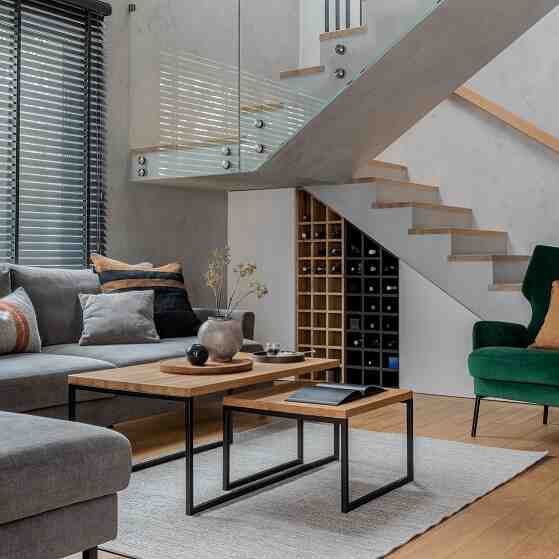Tips for Building Your First Wine Collection on a Budget
Building a wine collection can feel like a daunting task, especially if you’re working with a limited budget. However, it’s entirely possible to curate a collection that’s both affordable and impressive, while still including quality bottles that can grow with your knowledge and taste. Whether you’re just starting out or looking to expand your collection without breaking the bank, these tips will guide you through the process of building your first wine collection on a budget.
1. Start with What You Like
Before diving into obscure wine regions or fancy bottles, begin by exploring wines you already enjoy. This will help guide your collection choices and ensure that you’ll appreciate the wines as you start to build your stock.
- Identify Your Preferences: Are you drawn to red wines like Cabernet Sauvignon and Merlot, or do you prefer the crispness of whites like Sauvignon Blanc or Chardonnay? Identifying your tastes will allow you to focus on wines you’re more likely to drink and enjoy.
- Try Different Styles: If you’re not sure what you like yet, try experimenting with different wine styles (light vs. full-bodied, oaked vs. unoaked, etc.). This will help refine your palate and give you a clearer idea of what you want to collect.
2. Focus on Lesser-Known Regions
While wine from regions like Bordeaux or Napa Valley may be popular, they also come with higher price tags. By exploring wines from lesser-known wine regions, you can often find excellent quality at a fraction of the cost.
- Explore New World Wines: Countries like Chile, Argentina, South Africa, and Australia produce high-quality wines at more affordable prices. For example, Malbec from Argentina and Shiraz from Australia can offer fantastic value.
- Look to Emerging Regions: Countries like Portugal and Spain (outside of Rioja) also offer great value wines. Portuguese Vinho Verde and Spanish Garnacha are both excellent examples of affordable wines with unique flavor profiles.
- Look Beyond the Classics: If you love red Bordeaux wines, try an Italian Primitivo or a Spanish Tempranillo—both can offer a similar rich fruit character without the high price tag of a Bordeaux.
3. Buy in Bulk or by the Case
Buying wine in bulk or by the case is one of the best ways to save money while building your collection. Many retailers and wineries offer discounts when you buy a whole case (typically 12 bottles) rather than individual bottles.
- Case Discounts: If you find a wine you really like, consider purchasing a case to save money in the long run. Some wine shops or online retailers even offer case discounts, and you can sometimes negotiate a discount directly with local stores.
- Join a Wine Club: Some wine clubs offer access to high-quality wines at lower prices, as they often buy in bulk and pass the savings on to their members. While some clubs require subscriptions or membership fees, they can provide access to curated selections at a better value.
4. Look for Wine Sales and Deals
Shopping smartly and timing your purchases can make a big difference in how much you spend. Wine sales, promotions, and discounts happen regularly, so it pays to be on the lookout for deals.
- Seasonal Sales: Keep an eye on sales during the holidays or major events, like Black Friday or Wine Week promotions. These times often offer deep discounts on wine.
- Clearance Sections: Many wine shops offer clearance wines, usually those that are overstocked or nearing the end of their prime. These wines can still be great, especially if you’re looking to drink them within the next couple of years.
- Buy Online: Many online wine retailers offer discounts or free shipping, especially when you buy multiple bottles. Some sites also let you filter wines by price, so you can easily find budget-friendly options.
5. Choose Wines That Age Well
While you might not be able to afford all of your favorite wines at the moment, focusing on wines that have aging potential can allow you to collect wines that improve over time. By buying bottles that can be aged, you’re not only investing in a collection for today but also for the future.
- Look for Wines with Aging Potential: Certain wines, like Cabernet Sauvignon, Syrah, and Tempranillo, are known to age well. Even if they’re relatively affordable now, they can improve in flavor, depth, and complexity as they age.
- Buy Younger Bottles: Younger wines (like Chianti or Cabernet Franc) are often less expensive and have good aging potential. As you age them in your collection, their flavors will evolve and deepen, which could be a rewarding experience.
- Start with Value Wines with Aging Potential: Rather than jumping straight to high-priced wines, focus on good value wines from regions with aging potential. Spain’s Ribera del Duero or Italy’s Barolo (from younger vintages) can be excellent options that won’t break the bank upfront.
6. Focus on Affordable Wine Brands
Many established wine brands produce great value wines that are perfect for building a budget-friendly collection. Rather than splurging on rare or ultra-luxury wines, start with well-regarded, affordable options.
- Look for Lesser-Known Labels: Some wine regions or wineries produce high-quality wine under more affordable labels. For example, wines from Vinho Verde or Côtes du Rhône can be both affordable and excellent.
- Shop by Style, Not Label: The wine industry has a lot of well-known names, but that doesn’t mean a lesser-known brand can’t be just as good. Sometimes a smaller vineyard or a newer producer can offer excellent wines at more affordable prices.
- Affordable Quality Brands: Certain brands have made a name for themselves in delivering quality wines at lower prices. Wines from Barefoot, Apothic, or Lindeman’s are known for being budget-friendly and widely accessible.
7. Stick to a Budget and Plan Ahead
When building your wine collection, it’s easy to get carried away with the excitement of discovering new bottles. However, it’s important to set a realistic budget and stick to it.
- Create a Budget: Set a monthly or quarterly budget for wine purchases. By allocating a set amount each month, you’ll be able to gradually grow your collection without overwhelming your finances.
- Prioritize Purchases: Focus on buying wines that you’ll enjoy drinking now and in the future. For your first collection, avoid buying bottles that are too expensive or too rare—stick to wines you’ll get real enjoyment from.
- Plan for Future Purchases: As you gain more knowledge about wine and expand your collection, you can gradually invest in more expensive bottles. In the beginning, try to focus on building a solid foundation with affordable wines that you love.
8. Focus on Diversity and Versatility
Building a wine collection is about more than just buying a lot of bottles. To make sure your collection is both enjoyable and versatile, aim for a variety of wines that can fit different occasions, food pairings, and tastes.
- Variety Is Key: Include a mix of red, white, sparkling, and dessert wines to ensure you have a diverse selection. Look for wines that can be paired with a variety of meals, such as Chardonnay for seafood or Pinot Noir for light meats.
- Versatile Wines: Choose wines that pair well with a wide range of foods and occasions. Sauvignon Blanc, Cabernet Sauvignon, and Merlot are popular choices that are versatile and easy to drink.
9. Store Your Wine Properly
Proper storage is essential to maintaining the quality of your wine collection, especially if you plan on aging bottles. Even if you’re on a budget, proper storage will help preserve the wines and keep them tasting their best.
- Wine Rack or Shelf: If you have the space, invest in a wine rack or wine shelf. It doesn’t need to be expensive, but storing your wine in a cool, dark place will ensure that it stays in good condition.
- Avoid Heat and Light: Wine should be stored in a stable environment, away from heat and direct light. A cool, dry closet or a basement is ideal, but avoid storing bottles in places that fluctuate in temperature, such as near heaters or windows.
Conclusion
Building a wine collection on a budget is all about being smart with your purchases and focusing on quality, value, and versatility. Start by learning your preferences, seeking out affordable wines from lesser-known regions, and buying in bulk to save money. As you gain more knowledge, you can refine your collection and eventually invest in more premium wines. Most importantly, remember that wine collecting should be fun—whether you’re savoring a simple bottle of everyday wine or letting a bottle age gracefully for the future, the journey of discovering new wines is one worth enjoying. Cheers to building a collection that fits both your palate and your wallet!











